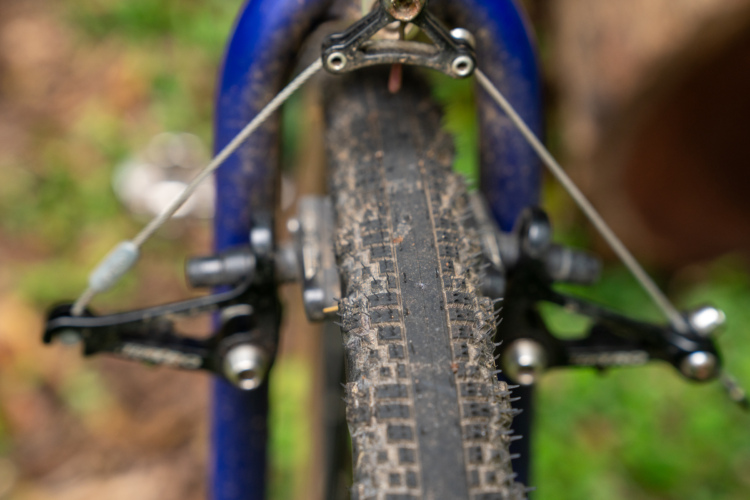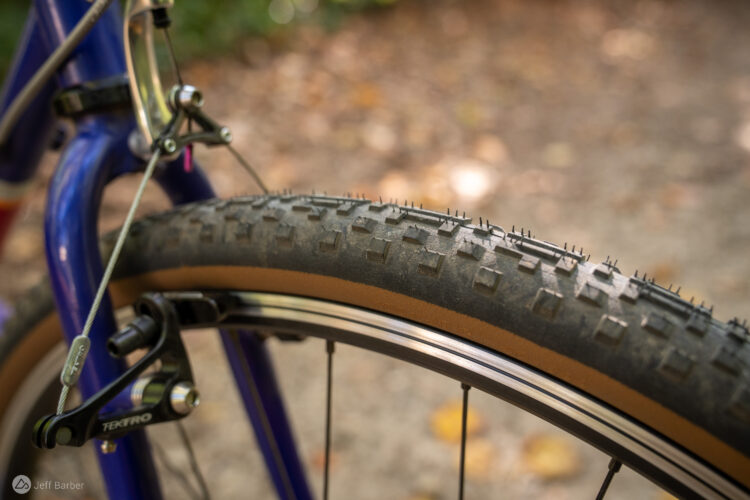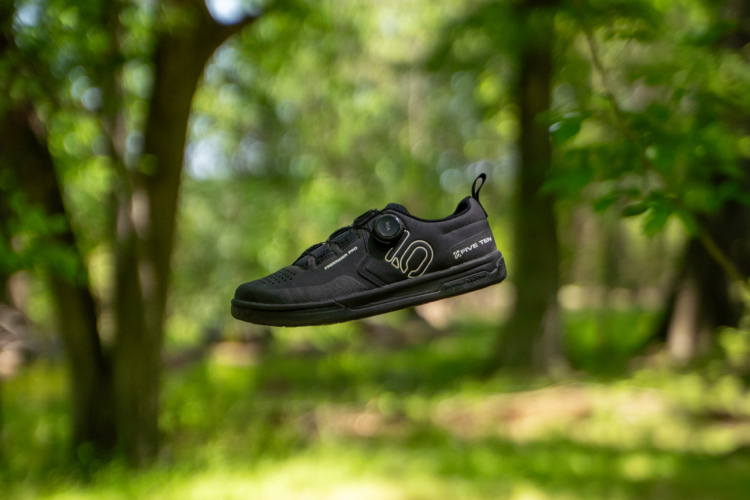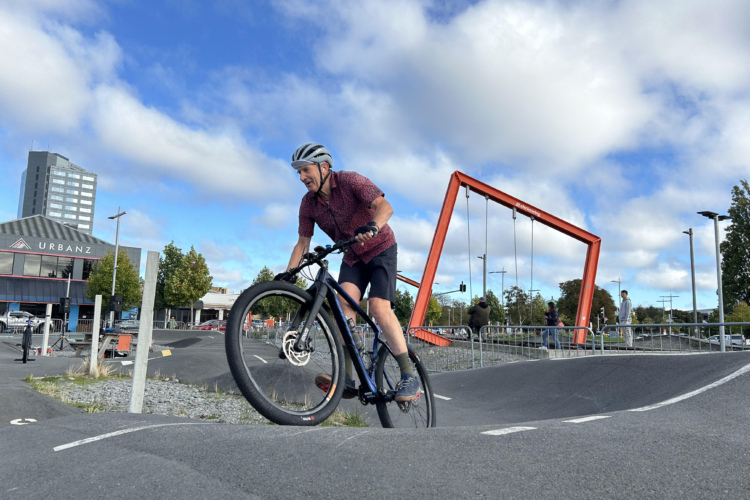
Growing up, I lived on a small cul-de-sac called Rutland Court. There were woods and a creek out back for us to explore. We learned to ride our bikes in the street. Playdates spilled from one backyard to the next. I think the Teravail Rutland gravel tire would have fit right in.
The Rutland is a tire that’s up for getting dirty, exploring the world, and best of all, it’s fun to ride. I’ve rolled the Teravail Rutland gravel bike tire over countless miles, and at this point, I consider it to be a good friend.
Teravail Rutland key specs
- Sizes: 650b and 700c, 35mm to 2.2″ widths. 700x35c tested.
- Weight: 490g
- Price: $65-80 ($65 as tested)
- Buy from Amazon

The Teravail Rutland features three distinct tread profiles across the tire. The ramped center tread is clustered in a chrevron pattern that’s designed to roll fast. Taller transition knobs ease into corners, while taller-still side knobs provide maximum bite.
I tested the narrowest Rutland available in order to ensure a fit with my frame, though Teravail offers the tire in widths up to 2.2″, which is proper MTB territory to be sure. With a directional tread pattern that clearly takes its cues from purely off-road tires, I can see this as a good choice for bikepacking, either drop bar or flat. The 700x35c tire size seems true-to-width.
Even as tested at its narrowest width, the Teravail Rutland delivers better than average climbing traction in the rear, and top-notch cornering, too. I’d be happy to run the Rutland front and rear; on its own, I think it’s slightly better suited as a front tire.
The Teravail Rutland is tubeless-ready, and I had no problem installing my sample. It’s held air exceptionally well, and I haven’t experienced any punctures, on the road or off.


Teravail positions the Rutland as a “mixed terrain,” all-weather tire. I found the tire handles well on both gravel roads and singletrack trails, though most of my test rides took place in dry conditions. I did roll through the occasional sticky stuff, and in those cases the tire proved to shed clay and mud effectively.
The rubber compound feels quite firm, and there aren’t many signs of wear despite hundreds of miles of testing. Because it’s a firm compound, it’s fast-rolling, too. The trade-off, of course, is that it’s not as grippy or sticky as a tire that uses a softer compound.
Share your Teravail Rutland review
Through rough terrain and also on the road, the Teravail Rutland is a comfortable tire. The Light and Supple 120tpi casing on the tire I tested delivers a good amount of flex for comfort and grip. I generally tested the tire with about 40psi of pressure and found that results in a good balance of comfort and traction with flat protection and control. The 700x35c size appears to be the only version with a 120tpi casing; all other sizes utilize a 60tpi casing.
The Teravail Rutland feels very similar to the WTB Raddler, a gravel tire I really like, and one that’s pretty popular among riders. It appears the Rutland may be slightly heavier than an equivalent size Raddler tire, though not by a lot.
Pros and cons of Teravail Rutland
Pros
- Aggressive tread for a gravel tire
- Wide variety of widths available
- Even the Light & Supple version provides good puncture protection
Cons
- The lightweight version isn’t especially so
Bottom line
If your drop-bar, mixed-terrain rides are mostly gravel and singletrack, the Teravail Rutland is a good buddy to take exploring beyond the ‘hood.





















2 Comments
Nov 30, 2024
Dec 2, 2024